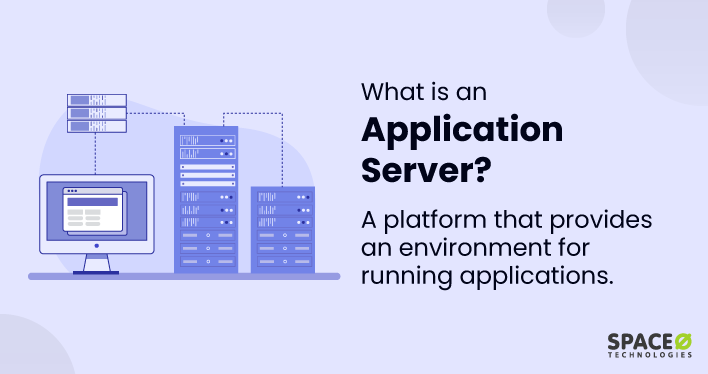Table of Contents
What is a Web Server?
A web server is a computer system or software that hosts and delivers web pages, files, and related content to clients over the internet, typically via the Hypertext Transfer Protocol (HTTP) or its secure version HTTPS.
One example of web server software is Apache HTTP Server. Apache web server supports multiple operating systems and is often used to host and deliver websites and web applications, which are built using a web application architecture.
A web server acts as a central hub that processes requests from web browsers and serves the requested content back to the clients. They play a crucial role in enabling the availability and accessibility of websites and web applications.
Now, let’s explore the components of web servers.
What are the Components of a Web Server?
The components of a web server include:
- HTTP Server: This component handles incoming HTTP requests from clients and manages the communication between the client and the server. It interprets the client’s request and formulates the appropriate response.
- TCP/IP: The Transmission Control Protocol/Internet Protocol (TCP/IP) is the underlying protocol suite used for communication over the Internet. It enables the exchange of data packets between the client and the server, ensuring reliable delivery.
- File System: The web server has a file system where it stores the web content, including HTML files, images, scripts, and other files. The file system allows the server to locate and serve the requested files to the clients.
- Web Server Software: The web servers software, such as Apache, Nginx, or Microsoft IIS, is responsible for handling incoming requests, processing them, and delivering the appropriate response back to the clients. It acts as the engine that powers the web server’s functionality.
- Application Server Integration: In some cases, the web server may interact with an application server to process dynamic content and execute the application’s business logic. This interaction enables the generation of dynamic responses based on user input, data processing, or interaction with external systems.
- Security Mechanisms: Web servers often implement security measures to protect the server and the data being transmitted. This includes features like SSL/TLS encryption, which ensures the confidentiality and integrity of the communication between the server and the clients.
- Logging and Monitoring: Web servers typically have logging and monitoring capabilities to track and record important events, such as client requests, server errors, and resource usage. These logs provide valuable insights for troubleshooting, analysis, and performance optimization.
- Caching and Load Balancing: Most web servers offer caching capabilities to store and serve frequently accessed content more efficiently, reducing the load on the server. Load balancing features distribute incoming traffic across multiple servers to ensure optimal resource utilization and improve scalability.
These components work together to enable the web server’s functionality. The dynamic web server generates and serves dynamic content and interacts with databases or other data sources. On the other hand, the static web server includes pre-existing HTML files and serves requested static content without any additional processing. Both types of servers contribute to receiving and processing client requests. They ensure smooth communication between the server and the clients by delivering the requested content promptly.
How Does a Web Server Work?
When it comes to understanding how a web server works, it operates on a client-server model where the client (usually a web browser) sends a request to the server for a specific web resource, such as a web page or a file. The server then processes the request and responds with the requested content, which is displayed on the client’s browser.
Here’s a breakdown of the process of how web servers work:
- Client Sends a Request: The client, which can be a web browser, sends an HTTP request to the web server. The request includes information such as the requested URL, request method (e.g., GET, POST), headers, and optional data.
- Web Server Receives the Request: The web server, listening on a specific port (usually port 80 for HTTP and port 443 for HTTPS), receives the incoming request from the client. It examines the request to determine the action it needs to take.
- Processing the Request: The web server processes the client’s request based on the specific configuration and logic defined in its settings. This may involve locating the requested resource, retrieving data from databases or other sources, and performing any necessary operations or computations.
- Generating the Response: Once the request has been processed, the web server generates an appropriate response. This includes constructing an HTTP response message that contains the requested content, status codes, headers, and any additional data.
- Sending the Response: The web server sends the response back to the client over the network. The response typically includes the requested web page, file, or any other resource, along with appropriate HTTP status codes and headers.
- Client Receives and Renders the Response: The client (web browser) receives the response from the web server. It interprets the response, rendering the web page or handling the requested resource as per its capabilities. The client may also send subsequent requests for additional resources embedded within the page, such as images, scripts, or stylesheets.
This client-server interaction happens continuously as users navigate through websites and interact with web applications. Web servers, which include both dynamic web servers and static web servers, play a crucial role in handling and responding to client requests for various web resources. They ensure the timely and accurate delivery of the requested web pages to users, enabling a seamless browsing experience. Database servers, in collaboration with web servers and application servers, store, process, and retrieve data, making it an essential component of many web applications.
Web servers, both in terms of software and hardware, are the backbone of the Internet, facilitating the accessibility and availability of online resources. The web server software controls the processing and delivery of web content, while the web server hardware provides the necessary computing power and infrastructure to support the server’s operations.
Whether it’s handling client requests, serving web pages, or managing data, web servers work together to ensure seamless functioning and optimal performance. Leading web servers software options like Apache HTTP Server, Nginx, Microsoft IIS, and LiteSpeed are relied upon for their robustness, reliability, and feature-rich capabilities in delivering web content efficiently.







